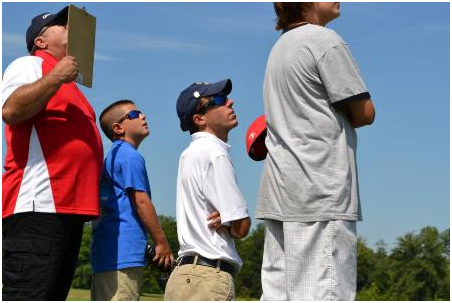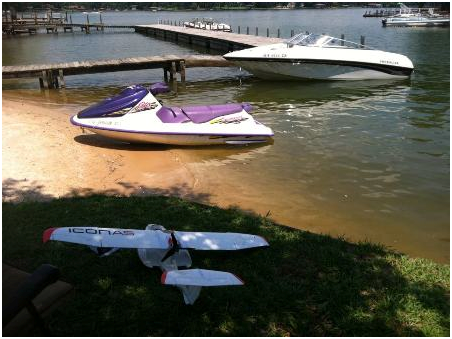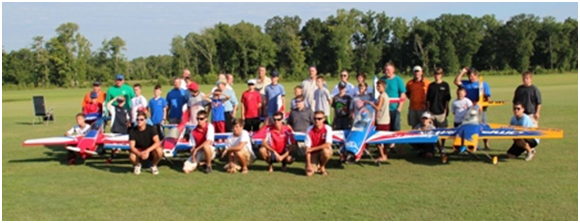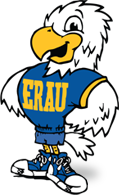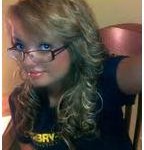 Hey y’all, I’m a southern sweetheart, transitioning from blonde to brunette, Daddy’s girl born and raised in the “First in Flight” state of North Carolina with 17 years to my credit. Friends and family call me Sam but my given name is Samantha Gray Allen. I am pursuing an Aerospace Engineering major and minor in Applied Meteorology at Embry-Riddle Aeronautical University in Daytona Beach, Florida. I am very pleased to introduce myself and begin sharing my experiences here with everyone.
Hey y’all, I’m a southern sweetheart, transitioning from blonde to brunette, Daddy’s girl born and raised in the “First in Flight” state of North Carolina with 17 years to my credit. Friends and family call me Sam but my given name is Samantha Gray Allen. I am pursuing an Aerospace Engineering major and minor in Applied Meteorology at Embry-Riddle Aeronautical University in Daytona Beach, Florida. I am very pleased to introduce myself and begin sharing my experiences here with everyone.
I’ve always found myself glancing up into the sky and furthering my thoughts of what could be. While most kids were zoned in to Nickelodeon or Disney, I was enamored with Storm Stories on The Weather Channel. I woke up with Al Roker and Stephanie Abrams from the Weather Channel was my ‘pretend friend’ of choice. I wouldn’t say I was a weird kid, more like an eccentric character trapped in a small body. Even now as a college freshman, I can still recall how my dream to become an astronaut came to grow from a wild imagination dressed in a tin foil costume with a crock pot helmet. Somehow, I always knew I would soar above and beyond my 5’5 stature; getting there was the part I had to figure out.
Starting off with small wings as a “Belmont Elementary Bumble Bee,” I was exposed to the ideas that linked the fun of science and math. My teachers were more unusual than most and used their classroom flamingos (Deci Ceni and Milli) to inspire students and apply academics to the real world. My fifth grade teacher, Ms. Pair, inspired me to be different than the rest, and to never let anyone or anything hold me back. I recall two projects from her class that seemed to indicate a path I was progressing towards. One consisted of designing my first invention; I chose a space “meal pill” a design I considered innovative for astronauts in space to eliminate having to consume three meals a day and reducing the amount of packaged food containments. Then there was the second: “career in a box.” I chose meteorologist and filled my box with weather photos and satellite imaging. I imagined myself sitting right there in the weather studio, broadcasting over the channel, affixed to the television in my sparkly princess bedroom.
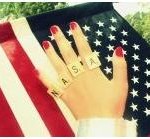 Middle School life was here before I knew it, and I had made a few changes over the summer break. My bedroom was no longer pink, boys weren’t quite as bad as my Daddy hoped I would still believe them to be and becoming a Chaloner “Junior Yellow Jacket” was a big deal for a young girl with high hopes. Here I came to expand my horizons and take my first technology class taught by Ms. Turner. She gave me the confidence that pushed me to aspire to work in the engineering field. From the hands-on building of our own small cars to the computer work behind it all, Ms. Turner brought our studies to life. It was from taking the technology courses that I began to desire hands on experimenting of my own. So I sought out opportunities like US Space Academy in Huntsville, Alabama. This was one of my funnest experiences, but also one that best prepared me most for Riddle life; my shuttle team was fifteen guys and only two girls. However, this didn’t stop me from grabbing the position of head engineer on our first mission. Can you say inspiration at its greatest? This camp not only gave me the courage to go forward into engineering, but also the ability to take on numerous extra-curricular tasks at once. Already involved with dancing and with ten years of dance competition team under my belt, I still decided to add more. I became involved with cheerleading, Spanish club, track, softball, peer builders and became student body president. A mouthful of course, but that’s nothing; wait until I compact four years of high school into three!
Middle School life was here before I knew it, and I had made a few changes over the summer break. My bedroom was no longer pink, boys weren’t quite as bad as my Daddy hoped I would still believe them to be and becoming a Chaloner “Junior Yellow Jacket” was a big deal for a young girl with high hopes. Here I came to expand my horizons and take my first technology class taught by Ms. Turner. She gave me the confidence that pushed me to aspire to work in the engineering field. From the hands-on building of our own small cars to the computer work behind it all, Ms. Turner brought our studies to life. It was from taking the technology courses that I began to desire hands on experimenting of my own. So I sought out opportunities like US Space Academy in Huntsville, Alabama. This was one of my funnest experiences, but also one that best prepared me most for Riddle life; my shuttle team was fifteen guys and only two girls. However, this didn’t stop me from grabbing the position of head engineer on our first mission. Can you say inspiration at its greatest? This camp not only gave me the courage to go forward into engineering, but also the ability to take on numerous extra-curricular tasks at once. Already involved with dancing and with ten years of dance competition team under my belt, I still decided to add more. I became involved with cheerleading, Spanish club, track, softball, peer builders and became student body president. A mouthful of course, but that’s nothing; wait until I compact four years of high school into three!
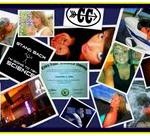 High school: the point where “idiocracy” and genius collide. Although I never really had a normal high school experience, it was great nonetheless. My first two years were at Roanoke Rapids High School, now with fully matured wings as a Yellow Jacket, and this was the time to prepare take off! From day one I would have to say my DECA advisor and Marketing teacher Ms. Tugwell had been my motivation and my rock. As Dan Rather once quoted, “A dream begins with a teacher who believes in you, who tugs and pushes and leads you to new heights, sometimes poking you with a sharp stick called truth.” Ms. Tugwell pushed me to become a fearless individual and speak in front of all the North Carolina DECA chapters, while running for state officer. She would always be honest and helpful, regardless of how many times I complained to her after school. It was this fearless nature that not only gave me the courage to take double math and science as well as summer online courses to get ahead, but also to fly. Climbing into the first small engine plane was sort of an out of body experience for me. With my grandmother, Linda Turner, in support of me all the way, I was able to once again conquer my fear of heights. I not only felt in control, I was hooked. I could see the world from above, which was exactly what I intended to do. So by the time I reached my sophomore year my plate was overflowing. Dance, DECA, student government, history club, RUSH, Key Club, softball, civil air patrol, volunteering for Halifax Medical Specialist Clinic, tutoring students at local learning centers, starting the scholars program, assisting with middle school science Olympiads, and cross country… I still have no clue on as to how I managed all of this.
High school: the point where “idiocracy” and genius collide. Although I never really had a normal high school experience, it was great nonetheless. My first two years were at Roanoke Rapids High School, now with fully matured wings as a Yellow Jacket, and this was the time to prepare take off! From day one I would have to say my DECA advisor and Marketing teacher Ms. Tugwell had been my motivation and my rock. As Dan Rather once quoted, “A dream begins with a teacher who believes in you, who tugs and pushes and leads you to new heights, sometimes poking you with a sharp stick called truth.” Ms. Tugwell pushed me to become a fearless individual and speak in front of all the North Carolina DECA chapters, while running for state officer. She would always be honest and helpful, regardless of how many times I complained to her after school. It was this fearless nature that not only gave me the courage to take double math and science as well as summer online courses to get ahead, but also to fly. Climbing into the first small engine plane was sort of an out of body experience for me. With my grandmother, Linda Turner, in support of me all the way, I was able to once again conquer my fear of heights. I not only felt in control, I was hooked. I could see the world from above, which was exactly what I intended to do. So by the time I reached my sophomore year my plate was overflowing. Dance, DECA, student government, history club, RUSH, Key Club, softball, civil air patrol, volunteering for Halifax Medical Specialist Clinic, tutoring students at local learning centers, starting the scholars program, assisting with middle school science Olympiads, and cross country… I still have no clue on as to how I managed all of this.
High school take two: Even though my heart will always belong to the Roanoke Rapids Graded School district and its members, my dream now came first and foremost. After running out of classes (and things to join it seemed) I transferred to KIPP Gaston College Preparatory. Here I met yet another group of amazing people. I was instilled with lifelong values I can never forget and still carry with me today. I limited myself to softball, cross country, volunteering around the Roanoke Valley, and starting the school’s first DECA chapter (with the help from the infamous Ms. Tugwell). With a year’s worth of credits and a schedule weighed down with AP classes I began thinking about the possibility of early graduation. Days following this “life recollection,” I ironically received a flyer in the mail from Embry-Riddle with photos of incredible storms and shuttle launches — the nerd in me could not resist. Over spring break I took time to drive ten hours south from my hometown of Roanoke Rapids to Daytona Beach. I chose to ask a friend to accompany me rather than family. For me this had to be the point where I spread my wings in trial if I was going to consider leaving home earlier than expected, I was going to have to prove my independence. After meeting with Ms. Fugere my heart was sold on Embry-Riddle and I completed the application on the spot. The entire 600 mile journey home, my future played over and over in my mind as to the possibilities following IF I were accepted. The following months back at home became crunch time as I compacted my whole senior year into one final semester and a short summer class. The day I received the acceptance letter in my hand was so happy I cried — and I rarely cry over anything. It was one of the happiest times of my life so far. Graduation now was not an ending for me, but simply a commencement or new beginning.
We all need motivation, that slight nudge to move ahead, something or someone to be inspired by…
Please continue to follow my blog because I don’t just want to expose my own journey here, but push each of you to see that by “accomplishing great things one must not only act, but also dream; not only plan, but also believe. -Antole France”


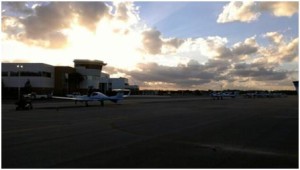
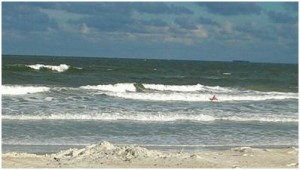
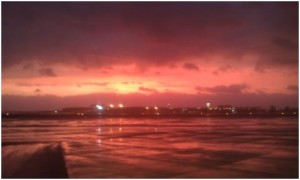



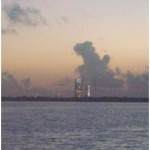
 This weekend also brought TEDxEmbryRiddle to campus, where distinguished speakers talked about their research and life experiences. The theme was “Powering our Future,” which really intrigued me. I’ve watched TED talks online before, so it was awesome to actually be a part of a conference!
This weekend also brought TEDxEmbryRiddle to campus, where distinguished speakers talked about their research and life experiences. The theme was “Powering our Future,” which really intrigued me. I’ve watched TED talks online before, so it was awesome to actually be a part of a conference! One of the things that I was really looking forward to as a college student was all the free events. This week is homecoming week, and I am looking forward to all the fun activities. Jim Gaffigan is coming to campus, and Touch-N-Go productions brought in We the Kings for a concert on Sunday evening.
One of the things that I was really looking forward to as a college student was all the free events. This week is homecoming week, and I am looking forward to all the fun activities. Jim Gaffigan is coming to campus, and Touch-N-Go productions brought in We the Kings for a concert on Sunday evening.
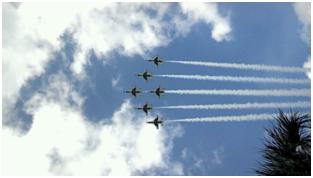

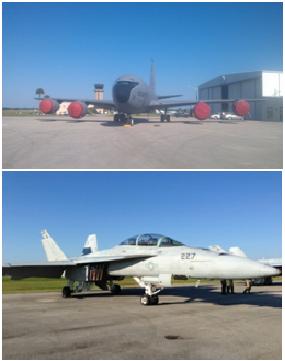
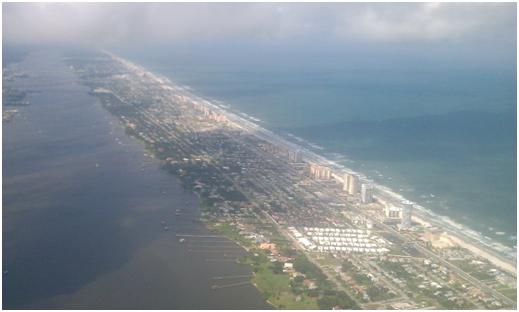
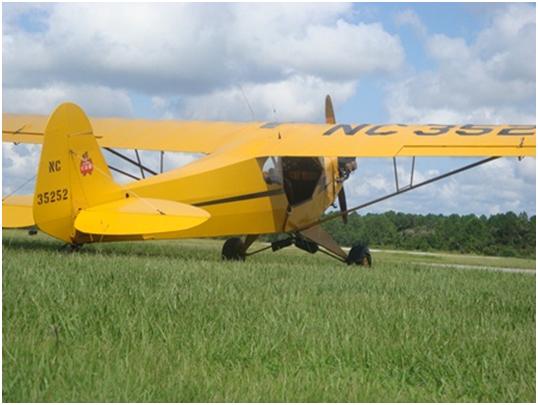 Fast forward to the present day, I just finished up my fourth week of classes. I have been at Embry-Riddle for a month and can’t believe time has gone by so quickly. My major is Aeronautical Science, which is the degree program to become a professional pilot. Currently, I am working on obtaining my Private Pilot license. A lot of class time is spent in the air, and in my opinion is the best classroom in the world! I currently live in Doolittle Hall, one of the four freshman dorms. I also became a member of two clubs on campus and also part of an intramural flag football team. Our first game was earlier this week, and unfortunately we came up a little short in getting the win. Since the team is comprised mostly of freshman, we didn’t know all of the rules to flag football and penalties got the best of us.
Fast forward to the present day, I just finished up my fourth week of classes. I have been at Embry-Riddle for a month and can’t believe time has gone by so quickly. My major is Aeronautical Science, which is the degree program to become a professional pilot. Currently, I am working on obtaining my Private Pilot license. A lot of class time is spent in the air, and in my opinion is the best classroom in the world! I currently live in Doolittle Hall, one of the four freshman dorms. I also became a member of two clubs on campus and also part of an intramural flag football team. Our first game was earlier this week, and unfortunately we came up a little short in getting the win. Since the team is comprised mostly of freshman, we didn’t know all of the rules to flag football and penalties got the best of us.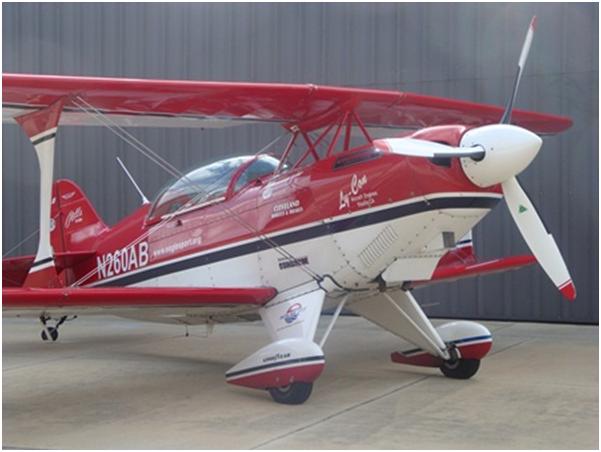 This weekend, I will be attending an airshow at Cocoa Beach with the Sport Aviation Club. I will talk about it in my next blog entry. I also have a model airplane under construction in my dorm that I hopefully will be able to fly by the next blog entry as well.
This weekend, I will be attending an airshow at Cocoa Beach with the Sport Aviation Club. I will talk about it in my next blog entry. I also have a model airplane under construction in my dorm that I hopefully will be able to fly by the next blog entry as well.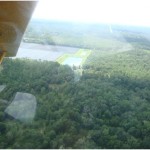 If you have any questions, feel free to
If you have any questions, feel free to 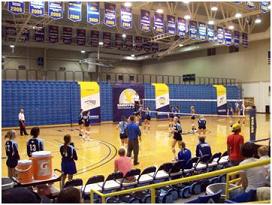 We all know that there is a lack of females on the Embry-Riddle campus, but it leads the girls who are here to become great friends. I’ve grown incredibly close to my roommate, Blair, and suitemates, Clare and Maggie, and we get plenty of girl time with dinners out and pedicures (sometimes the guys even join in). There are so many clubs to be involved with and new people to meet that I am never bored! I have always liked to be involved, so I joined “The Flock” spirit club, volunteer my computer graphics skill to The Avion student newspaper and am a Hall Representative for the Embry-Riddle Resident Student Association.
We all know that there is a lack of females on the Embry-Riddle campus, but it leads the girls who are here to become great friends. I’ve grown incredibly close to my roommate, Blair, and suitemates, Clare and Maggie, and we get plenty of girl time with dinners out and pedicures (sometimes the guys even join in). There are so many clubs to be involved with and new people to meet that I am never bored! I have always liked to be involved, so I joined “The Flock” spirit club, volunteer my computer graphics skill to The Avion student newspaper and am a Hall Representative for the Embry-Riddle Resident Student Association.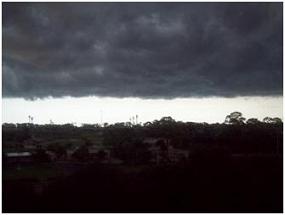 Also, most of the time the weather is warm, but beware of pop-up showers in the afternoon! Carry an umbrella on you at all times. Regardless, the cloud patterns are magnificent. I love looking out my window and seeing the lightning and clouds for miles and miles. It only affirms my goal to get a minor in meteorology!
Also, most of the time the weather is warm, but beware of pop-up showers in the afternoon! Carry an umbrella on you at all times. Regardless, the cloud patterns are magnificent. I love looking out my window and seeing the lightning and clouds for miles and miles. It only affirms my goal to get a minor in meteorology!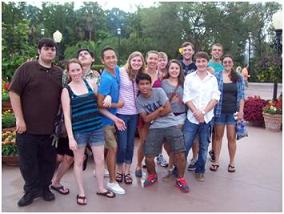
 Hey y’all, I’m a southern sweetheart, transitioning from blonde to brunette, Daddy’s girl born and raised in the “First in Flight” state of North Carolina with 17 years to my credit. Friends and family call me Sam but my given name is Samantha Gray Allen. I am pursuing an Aerospace Engineering major and minor in Applied Meteorology at Embry-Riddle Aeronautical University in Daytona Beach, Florida. I am very pleased to introduce myself and begin sharing my experiences here with everyone.
Hey y’all, I’m a southern sweetheart, transitioning from blonde to brunette, Daddy’s girl born and raised in the “First in Flight” state of North Carolina with 17 years to my credit. Friends and family call me Sam but my given name is Samantha Gray Allen. I am pursuing an Aerospace Engineering major and minor in Applied Meteorology at Embry-Riddle Aeronautical University in Daytona Beach, Florida. I am very pleased to introduce myself and begin sharing my experiences here with everyone. Middle School life was here before I knew it, and I had made a few changes over the summer break. My bedroom was no longer pink, boys weren’t quite as bad as my Daddy hoped I would still believe them to be and becoming a Chaloner “Junior Yellow Jacket” was a big deal for a young girl with high hopes. Here I came to expand my horizons and take my first technology class taught by Ms. Turner. She gave me the confidence that pushed me to aspire to work in the engineering field. From the hands-on building of our own small cars to the computer work behind it all, Ms. Turner brought our studies to life. It was from taking the technology courses that I began to desire hands on experimenting of my own. So I sought out opportunities like US Space Academy in Huntsville, Alabama. This was one of my funnest experiences, but also one that best prepared me most for Riddle life; my shuttle team was fifteen guys and only two girls. However, this didn’t stop me from grabbing the position of head engineer on our first mission. Can you say inspiration at its greatest? This camp not only gave me the courage to go forward into engineering, but also the ability to take on numerous extra-curricular tasks at once. Already involved with dancing and with ten years of dance competition team under my belt, I still decided to add more. I became involved with cheerleading, Spanish club, track, softball, peer builders and became student body president. A mouthful of course, but that’s nothing; wait until I compact four years of high school into three!
Middle School life was here before I knew it, and I had made a few changes over the summer break. My bedroom was no longer pink, boys weren’t quite as bad as my Daddy hoped I would still believe them to be and becoming a Chaloner “Junior Yellow Jacket” was a big deal for a young girl with high hopes. Here I came to expand my horizons and take my first technology class taught by Ms. Turner. She gave me the confidence that pushed me to aspire to work in the engineering field. From the hands-on building of our own small cars to the computer work behind it all, Ms. Turner brought our studies to life. It was from taking the technology courses that I began to desire hands on experimenting of my own. So I sought out opportunities like US Space Academy in Huntsville, Alabama. This was one of my funnest experiences, but also one that best prepared me most for Riddle life; my shuttle team was fifteen guys and only two girls. However, this didn’t stop me from grabbing the position of head engineer on our first mission. Can you say inspiration at its greatest? This camp not only gave me the courage to go forward into engineering, but also the ability to take on numerous extra-curricular tasks at once. Already involved with dancing and with ten years of dance competition team under my belt, I still decided to add more. I became involved with cheerleading, Spanish club, track, softball, peer builders and became student body president. A mouthful of course, but that’s nothing; wait until I compact four years of high school into three! High school: the point where “idiocracy” and genius collide. Although I never really had a normal high school experience, it was great nonetheless. My first two years were at Roanoke Rapids High School, now with fully matured wings as a Yellow Jacket, and this was the time to prepare take off! From day one I would have to say my DECA advisor and Marketing teacher Ms. Tugwell had been my motivation and my rock. As Dan Rather once quoted, “A dream begins with a teacher who believes in you, who tugs and pushes and leads you to new heights, sometimes poking you with a sharp stick called truth.” Ms. Tugwell pushed me to become a fearless individual and speak in front of all the North Carolina DECA chapters, while running for state officer. She would always be honest and helpful, regardless of how many times I complained to her after school. It was this fearless nature that not only gave me the courage to take double math and science as well as summer online courses to get ahead, but also to fly. Climbing into the first small engine plane was sort of an out of body experience for me. With my grandmother, Linda Turner, in support of me all the way, I was able to once again conquer my fear of heights. I not only felt in control, I was hooked. I could see the world from above, which was exactly what I intended to do. So by the time I reached my sophomore year my plate was overflowing. Dance, DECA, student government, history club, RUSH, Key Club, softball, civil air patrol, volunteering for Halifax Medical Specialist Clinic, tutoring students at local learning centers, starting the scholars program, assisting with middle school science Olympiads, and cross country… I still have no clue on as to how I managed all of this.
High school: the point where “idiocracy” and genius collide. Although I never really had a normal high school experience, it was great nonetheless. My first two years were at Roanoke Rapids High School, now with fully matured wings as a Yellow Jacket, and this was the time to prepare take off! From day one I would have to say my DECA advisor and Marketing teacher Ms. Tugwell had been my motivation and my rock. As Dan Rather once quoted, “A dream begins with a teacher who believes in you, who tugs and pushes and leads you to new heights, sometimes poking you with a sharp stick called truth.” Ms. Tugwell pushed me to become a fearless individual and speak in front of all the North Carolina DECA chapters, while running for state officer. She would always be honest and helpful, regardless of how many times I complained to her after school. It was this fearless nature that not only gave me the courage to take double math and science as well as summer online courses to get ahead, but also to fly. Climbing into the first small engine plane was sort of an out of body experience for me. With my grandmother, Linda Turner, in support of me all the way, I was able to once again conquer my fear of heights. I not only felt in control, I was hooked. I could see the world from above, which was exactly what I intended to do. So by the time I reached my sophomore year my plate was overflowing. Dance, DECA, student government, history club, RUSH, Key Club, softball, civil air patrol, volunteering for Halifax Medical Specialist Clinic, tutoring students at local learning centers, starting the scholars program, assisting with middle school science Olympiads, and cross country… I still have no clue on as to how I managed all of this.
